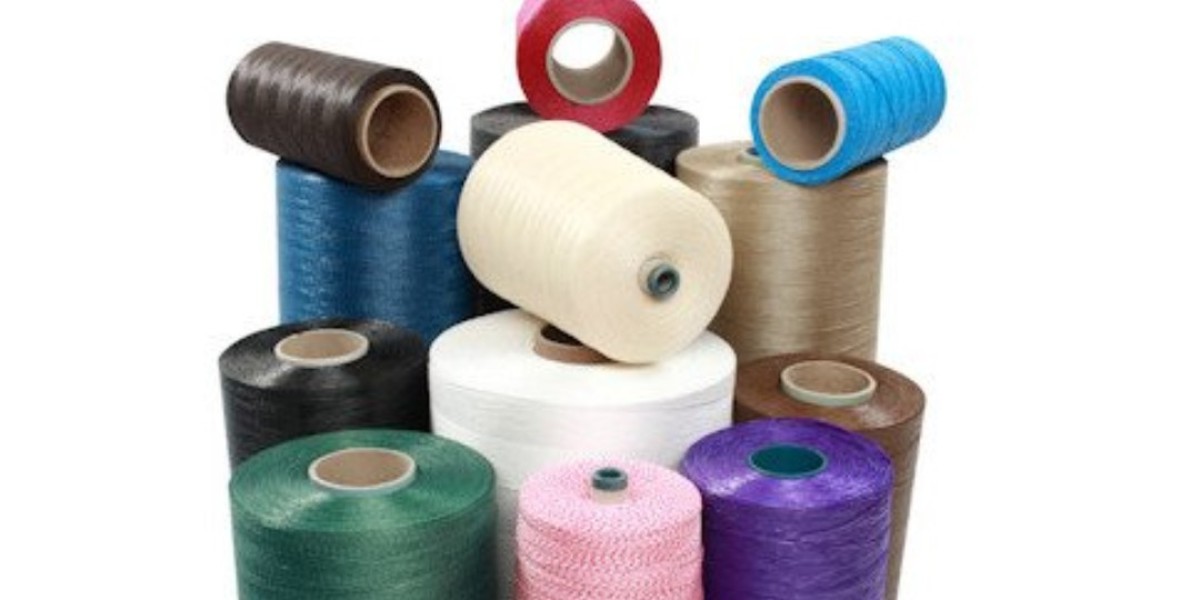Polypropylene (PP) fibrillated yarn has established itself as a vital material in various industries, particularly in the realm of geotextiles. Its unique properties, including strength, durability, and resistance to environmental factors, make it an essential product for manufacturers and end-users alike. This comprehensive article aims to explore the characteristics, production processes, applications, and market dynamics of Pulkit Plastic Products while also shedding light on the role of specialized manufacturers and exporters in this evolving field.
Understanding the Characteristics of PP Fibrillated Yarn
PP fibrillated yarn is derived from polypropylene, a thermoplastic polymer known for its robust physical properties. Fibrillation refers to the process of splitting the yarn into finer filaments, enhancing its strength, texture, and surface area. This results in a lightweight yet strong product suitable for various applications, including textiles, geotextiles, and packaging materials.
One of the most noteworthy characteristics of fibrillated PP yarn is its exceptional tear and tensile strength. These properties ensure that products made from this yarn can withstand significant wear and tear, making them suitable for demanding environments. Additionally, the yarn is inherently resistant to moisture, chemicals, and UV rays, which is particularly beneficial for outdoor applications.
Furthermore, fibrillated yarn is known for its ability to promote drainage, which is essential in geotextile applications. When used in soil stabilization or erosion control, the yarn's structure facilitates the flow of water while preventing soil movement, helping to maintain ecological balance. This blend of functionality and resilience makes PP fibrillated yarn a favored choice across various sectors.
The Production Process of PP Fibrillated Yarn
The manufacturing of Fibrillated yarn for geotextiles involves several interconnected stages. The process begins with the polymerization of propylene, resulting in polypropylene granules. These granules are then melted and extruded into filaments. The next phase involves the drawing of these filaments, aligning the molecular structure to enhance strength and durability.
Following extrusion and drawing, the filaments undergo a fibrillation process. This involves mechanically splitting or separating the yarn into finer fibrils, a crucial step that defines the characteristics of the final product. The fibrillation process can vary, with some manufacturers employing chemical treatments to enhance performance features further.
In order to maintain quality and performance standards, PP fibrillated yarn manufacturers rely on advanced machinery and technology. Quality control procedures are implemented at every stage of production to ensure that the final product meets the desired specifications. The result is a high-quality yarn ready for various applications, including geotextiles, which is widely sought after by end-users and industries alike.
Applications of Fibrillated Yarn in Geotextiles
Fibrillated yarn for geotextiles stands out due to its multifaceted properties. Geotextiles are permeable fabrics used to improve soil characteristics, and fibrillated yarn plays a significant role in this application. The yarn’s structural integrity supports various geotechnical functions, including filtration, drainage, reinforcement, and separation.
In erosion control, for instance, fibrillated PP yarn is utilized in products like erosion control blankets, which protect soil from water and wind erosion. The yarn’s drainage capabilities ensure that water can pass through while preventing soil loss, thereby maintaining the integrity of landscapes and promoting vegetation growth.
Additionally, PP fibrillated yarn is employed in applications such as road construction and landscaping, where it provides stabilization and reinforcement. Its lightweight nature facilitates ease of handling during installation while ensuring that underlying soils remain intact during challenging conditions. This versatility makes fibrillated yarn a mainstay in applications where soil stability is critical, aligning with contemporary sustainability efforts in landscaping and civil engineering.
The Role of PP Fibrillated Yarn Manufacturers
PP fibrillated yarn manufacturers play a crucial role in the value chain, ensuring a steady supply of high-quality material to various industries. These manufacturers are tasked with maintaining rigorous quality control and adhering to industry standards, which not only enhances their reputation but also ensures customer satisfaction.
In countries with a burgeoning industrial sector, like India, numerous manufacturers focus exclusively on producing fibrillated yarn. They not only cater to domestic markets but also engage in international trade, becoming key players in the global supply chain. Employing advanced manufacturing techniques, these companies work to innovate and improve product performance, ultimately shaping the future of fibrillated yarn applications.
In addition to product quality, manufacturers also focus on customer service. By understanding client needs and market trends, they can develop customized solutions that meet specific requirements. This tailored approach enables them to build strong relationships with clients, fostering loyalty and long-term partnerships. As the market continues to evolve, these manufacturers are essential in driving product advancements and addressing emerging challenges in the industry.
The Global Market for PP Fibrillated Yarn
The market for PP Fibrillated Yarn Manufacturers is experiencing robust growth, driven by increasing demand in various applications, particularly in geotextiles and construction. As awareness of sustainable practices and eco-friendly materials rises, the need for durable and long-lasting solutions grows. Many industries are turning to fibrillated yarn as a reliable option for enhancing functionality while promoting sustainability.
Fibrillated PP yarn exporters play a vital role in this market, facilitating the distribution of products across borders. Their efforts enable manufacturers to reach a broader customer base and explore new markets in regions where demand for geotextiles and other woven materials is on the rise. By navigating international trade regulations and logistics, these exporters help mitigate the complexities associated with cross-border transactions.
As global infrastructure projects gain momentum and interest in sustainable practices increases, the demand for high-quality fibrillated yarn continues to soar. Manufacturers and exporters are focusing on enhancing product characteristics, including tensile strength and resistance to environmental factors, to stay competitive in this expanding market. The future of fibrillated PP yarn appears promising as it aligns with current industry trends and the growing emphasis on sustainable development.
Key Challenges in the PP Fibrillated Yarn Market
While the prospects for fibrillated yarn are optimistic, several challenges must be overcome to ensure sustained growth. One of the primary issues faced by PP fibrillated yarn manufacturers is the volatility of raw material prices. The cost of polypropylene can fluctuate significantly due to changes in crude oil prices, impacting production costs and profit margins.
Additionally, competition in the market is intensifying as new players enter the industry, making it essential for manufacturers to differentiate their products. Companies that invest in research and development to innovate and improve product features will likely find success in a crowded marketplace. Understanding customer preferences and adapting to evolving market trends will also be critical for manufacturers seeking to gain a competitive edge.
Furthermore, regulatory challenges surrounding the use of plastics can pose obstacles for manufacturers, especially with increasing sustainability concerns. Companies must navigate these regulations and, where possible, invest in developing environmentally friendly alternatives to maintain compliance while still meeting performance needs.
Conclusion
The Fibrillated PP Yarn Exporters stands at the confluence of innovation, functionality, and sustainability. Its remarkable properties make it an indispensable material in various applications, particularly in geotextiles. As demand continues to grow, the role of manufacturers and exporters becomes increasingly vital, creating opportunities for innovation and collaboration within the industry.
With ongoing developments in technology and emphasis on sustainable practices, the future of fibrillated PP yarn appears bright. Manufacturers are tasked with navigating challenges such as raw material volatility and increased competition while also responding to the growing demand for eco-friendly solutions. As the market evolves, the unwavering commitment to quality and performance from manufacturers will be crucial in meeting the diverse needs of customers and industries alike.
Frequently Asked Questions
1. What is the primary use of PP fibrillated yarn in geotextiles?
PP fibrillated yarn is primarily used in geotextiles for applications such as erosion control, filtration, drainage, and soil stabilization. Its structural integrity and moisture resistance make it an ideal choice for enhancing soil characteristics.
2. How does the fibrillation process enhance the properties of PP yarn?
Fibrillation involves mechanically splitting the yarn into finer filaments, which increases its surface area and tensile strength. This enhancement allows for greater flexibility, durability, and improved performance in various applications.
3. What challenges do PP fibrillated yarn manufacturers face in the market?
Manufacturers face challenges such as fluctuating raw material prices, increasing competition, and regulatory hurdles related to plastic use. Adapting to market trends and investing in sustainable alternatives are also essential to overcoming these challenges.
4. How do fibrillated PP yarn exporters contribute to the market?
Fibrillated PP yarn exporters facilitate the distribution of products globally, enabling manufacturers to reach broader customer bases and explore new markets. Their expertise in international trade regulations helps ensure smooth cross-border transactions.







